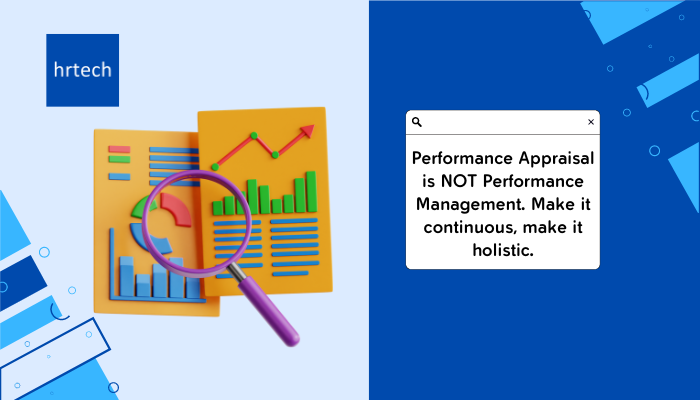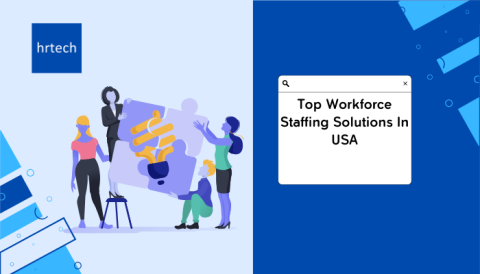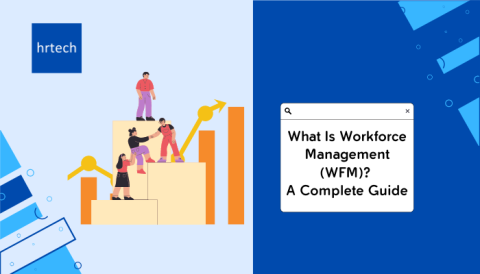For any organization that is moving from annual appraisal mode to continuous performance management, it is a change in culture. Organizations which adopt this culture will be able to keep their employees engaged and drive towards performance

Performance appraisal is just one output for Performance Management. And, there are a lot of other aspects such as coaching, development, engagement, rewards and recognition that are involved in the purview of performance management. However, when we talk about the concept, often times, people always correlate it with Performance Appraisals.
Key Elements that facilitates employee engagement & development
I would like to throw some lights on how organizations can benefit by going beyond performance appraisals. Following is a quick snapshot of the various elements that organizations are trying to focus from a performance management front:
| Purpose of Work | Day-to-Day Matters | Check-ins | Growth |
|---|---|---|---|
|
|
|
|
|
Purpose of Work
- Goals
- Accomplishments
- Support needed in accomplishing the goals
Day-to-Day Matters
- Reward and Recognitions such as Spot Awards and Rolestar
- Areas of development
Check-ins
- Am I happy with my work, environment, etc?
- Is my manager helping me in my goals?
- What help do I need from my manager or organization for my career growth?
- 360-degree view of the individual
- Anytime performance conversations
Growth
- How am I doing on the skillsets needed for my work?
- What skillsets / competencies should I develop to go to he next level?
- Half-yearly / Annual Appraisals
- Salary revisions / promotions / New responsibilities
The moment you see the impact of these elements on employee performance, we can easily recognize that performance management goes beyond performance appraisals.
Adding the “Continuous” factor in your performance management
In a “continuous” paradigm, managers and employees work together on a continuous basis. They define relevant goals, work towards these goals and make sure that there is a continuous review of these goals. This makes goals management more effective.
Sense of belonging: Bring in “appreciation, thank you, rewards and recognition, providing feedback on development areas” as a way of life. This should not be seen as micro-management. But, more towards building collaborative, empowered work culture.
If you look at our own involvement in Social networks, we all have moved towards Instant gratification. The moment we post our promotion, achievements in Facebook, we look for instant gratifications by looking at the number of likes and comments. The same thing applies to work life as well. If peers recognize someone’s work (however small it could be), it motivates people to deliver better all the time, every time.
Coaching: When managers and peers get involved and provide feedback (around areas where people can do better) on a continuous basis to their team members, it becomes a coaching exercise. Managers double up as a coach for their team members. This will generate more trust among manager and employees. Naturally, this will help in driving high performance and retention.
Frequent Performance Conversations: Lots of organizations have also started moving towards having frequent, formal performance conversations (Check-ins). This could be just a semi-formal with focus on:
- What is happening?
- What is going well?
- What needs to be made better/changed?
- What help is required?
When this kind of performance conversations & collaboration happens, the focus will be on employee development.
Should you abandon Annual performance appraisals?
We are not saying that employee performance appraisals are not important or to move away from it. For now, that is the primary, validated mechanism available in front of employees and HR for salary revisions, promotions, etc. And, it must be done at least once a year. What we are saying is: continuous feedback, rewards and recognition, milestone achievements, etc. should culminate in annual reviews to make it more effective.
Conclusion
For any organization that is moving from annual appraisal mode to continuous performance management, it is a change in culture. Organizations which adopt this culture will be able to keep their employees engaged and drive towards performance. They can become a great place to work. The future is heading towards continuous employee performance management. Latest HR Tech tools such as Synergita helps in building the culture of trust and development in your organization. Make your performance management continuous, holistic and productive.
About the Author:

Shankar is a Co-Founder & CEO of Synergita , a Continuous Feedback based Employee Performance & Engagement Software. Synergita considers several Great Place to Work companies as their customers. Prior to Synergita, Shankar co-founded Aspire Systems along with Gowrishankar Subramanian and Bhoovarahan Thirumalai where they provide digital transformation and enablement services for global organisations. Aspire is rated as a Great Place to work for the past 9 years consecutively. And it was during their research that they discovered that employee performance and engagement space is under-served and has a huge potential. That was how Synergita was created.





